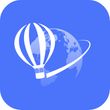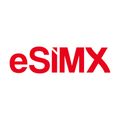RedteaGOは世界100か国以上で利用できるeSIMサービスで、手頃なローカル料金とデータ無制限のデイリーオプションを提供します。また、データのほかSMS、通話を含むパッケージも用意しています。複数のネットワークカバレッジで24時間365日通信を楽しむことができ、信頼できるカスタマーサービスサポートも利用可能です。信頼できる常時接続にRedteaGOをお選びください。

RedteaGOは世界100か国以上で利用できるeSIMサービスで、手頃なローカル料金とデータ無制限のデイリーオプションを提供します。また、データのほかSMS、通話を含むパッケージも用意しています。複数のネットワークカバレッジで24時間365日通信を楽しむことができ、信頼できるカスタマーサービスサポートも利用可能です。信頼できる常時接続にRedteaGOをお選びください。
プロモコード
オセアニアとその周辺地域向けRedteaGO eSIMデータプラン
よくある質問
RedteaGOはオセアニアとその周辺地域向けに無制限データeSIMを提供していますか?
RedteaGOにはオセアニアとその周辺地域向けに「無制限データ」プランは用意されていません。代わりに、最大20 GBまでのデータ容量を設定した定量コースが用意されています。たとえば、365日有効の20 GBプランは68 USD、365日有効の10 GBプランは58 USDで設定されており、これらはオーストラリア・ニュージーランドを含む130ヤ国への通信をカバーしています。どちらも1 GB未満のプランよりはコストパフォーマンスが高いですが、極端に大量の通信を行わない限り、30日有効の5 GBや3 GB、30日有効の1 GBプランを選択する方が経済的です。なお、設定されたデータ容量を超過した場合の速度限定や後付け料金については、RedteaGOの公式情報をご確認ください。
RedteaGOはオセアニアとその周辺地域向けに電話番号やSMS付きeSIMプランを提供していますか?
RedteaGOではオセアニアおよびその周辺地域向けに電話番号付きやSMS機能付きのeSIMプランは提供していません。
提供されているのはすべてデータ通信専用のプランです。電話番号やSMS機能を必要としない場合は、LINEやFacebook Messenger、iMessageなどのVoIPアプリを利用して音声通話やメッセージのやり取りが可能です。
RedteaGOのオセアニアとその周辺地域向けeSIMプランは、どの国で利用できますか?
RedteaGOが提供するオセアニアとその周辺地域向けeSIMプランは、主に「New Zealand & Australia」プランと「Global (130+ areas)」プランの2種類です。「New Zealand & Australia」はオーストラリアとニュージーランドという2カ国で利用できる複数国プランであり、両国で同じ料金設定でデータ通信が可能です。「Global (130+ areas)」はオーストラリア、グアム、ニュージーランドを含む複数国プランで、さらに130以上の他国・地域でも利用できるため、オセアニア以外の利用者にも対応しています。その他の国別プランは現在確認されておらず、上記2つのプランが該当国(オーストラリア、ニュージーランド、グアム)に対応しています。
Summarized by Gen AI. Last updated:




